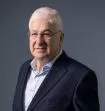Keywords: software copyright, programming languages, data file formats
The UK Courts have recently decided a high-profile software copyright case, following clarification on some key issues from the European Court. The SAS Institute case examines whether software programming languages, data file formats and other program elements are protected by copyright.
SAS Institute v. World Programming started off in 2010, when the English High Court decided that World Programming's competing software did not infringe SAS's copyright in its software (but that the WP manuals did infringe the separate copyright in SAS's manuals). It sent off a number of questions to the Court of Justice of the European Union, in particular asking whether functionality, programming languages and data file formats were protected by the copyright in the software. The European Court opined in May 2012 (see our alert) and gave the answer "no". The case then went back to the English High Court to resolve outstanding issues and its judgment came out in January 2013.
Functionality, programming languages and data file formats
Whilst the European Court had ruled out these elements being protected by copyright in the software itself (at least where source code is not copied - WP had not had any access to source code), this left open the questions of whether those elements might be copyright-protected in their own right. Recent European developments show that works are only protected by copyright if they are "expressions of their author's own intellectual creation". Individual key words, syntax, commands and so on were not an "intellectual creation". This is consistent with the general principle that copyright will not protect high level ideas but only the way in which ideas are expressed - for instance in source code.
The English High Court said it was too late for SAS now to change tack and argue that its language and formats were copyright works in their own right. It had not explicitly argued this before. The judge however went on to give his provisional view on what his answer to those questions would be. For both, he said copyright did not apply. For the programming language, it was doubtful whether it was even a "work", let alone an intellectual creation. The evolutionary way in which the SAS language had developed made it doubtful that it was a "compilation" (another kind of copyright protected work). The claim relating to the data file formats also failed, for similar reasons.
What can a licensee do?
Finally, the English judge had to look at the specific provision of European law relating to what WP had done using its own licences of SAS. Obviously, those standard licences did not envisage that WP would use the software to set about creating a competing program. The European Software Directive allows software licensees to use their copy of the software "to observe, study or test the functioning of the program" in order to "determine the ideas and principles which underlie any element of the program".
The European Court's judgment on this particular point had been rather unclear but the English judge held that WP had not infringed even though more than one person had had access to the licensed copy (the SAS licence restricted it to one person per licence) and even though WP had used its copy for purposes beyond the scope of the licence. He interpreted the relevant wording of Software Directive to mean that a licensee is free to use its licensed copy of the software to look at underlying ideas etc, as long as it is not falling foul of the rules against decompilation. Since WP had not had any access to source code, it was complying with those rules. SAS could not outlaw use of its software for the purposes of creating a competing product since the permissions in the Software Directive override contractual restrictions.
Limits on restrictions in software licences
This is therefore another inroad into software companies' freedom to put whatever they like in their licences.
- In the wake of SAS Institute, it is clear that they cannot prevent licensees from studying their software in order to create competing programs.
- The Software Directive also says that licensors cannot forbid users from decompiling the program where this is indispensible to obtain interoperability information (as long as this relates to interoperation with an independently created program).
- Finally, last year's UsedSoft case (see our alert) held that software companies cannot use licence terms to prevent sales of second hand software by licensees.
Previously published March 1, 2013
Visit us at mayerbrown.com
Mayer Brown is a global legal services provider comprising legal practices that are separate entities (the "Mayer Brown Practices"). The Mayer Brown Practices are: Mayer Brown LLP and Mayer Brown Europe – Brussels LLP, both limited liability partnerships established in Illinois USA; Mayer Brown International LLP, a limited liability partnership incorporated in England and Wales (authorized and regulated by the Solicitors Regulation Authority and registered in England and Wales number OC 303359); Mayer Brown, a SELAS established in France; Mayer Brown JSM, a Hong Kong partnership and its associated entities in Asia; and Tauil & Chequer Advogados, a Brazilian law partnership with which Mayer Brown is associated. "Mayer Brown" and the Mayer Brown logo are the trademarks of the Mayer Brown Practices in their respective jurisdictions.
© Copyright 2013. The Mayer Brown Practices. All rights reserved.
This Mayer Brown article provides information and comments on legal issues and developments of interest. The foregoing is not a comprehensive treatment of the subject matter covered and is not intended to provide legal advice. Readers should seek specific legal advice before taking any action with respect to the matters discussed herein.

